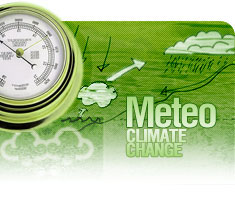sdfsf
sdfsdfs
Background
Emissions trading, as set out in Article 17 of the Kyoto Protocol, provides for Annex I Parties to acquire units from other Annex I Parties and use them towards meeting their emissions targets under the Kyoto Protocol. This enables Parties to make use of lower cost opportunities to reduce emissions, irrespective of the Party in which Party those opportunities exist.
Only Annex I Parties to the Kyoto Protocol with emissions limitation and reduction commitments inscribed in Annex B to the Protocol may participate in such trading. Such Parties may therefore prepare to transfer units when they do not require them for compliance with their own emissions targets. << more >>
The commitment period reserve
In order to address the concern that Annex I Parties could “oversell” units and subsequently be unable to meet their own emissions targets, each Party is required to hold a minimum level of ERUs, CERs, AAUs and RMUs in its national registry. This is known as the “commitment period reserve”. This reserve is calculated as the lower of the following:
- 90% of the Party’s assigned amount, as defined in Articles 3.7 and 3.8 of the Protocol. This calculation is likely to be relevant to Annex I Parties which prove, at the end of the commitment period, to be “net buyers” of units under the mechanisms.
- The level of national emissions indicated in the Party’s most recent emissions inventory (multiplied by five, for the five years of the commitment period). This calculation is likely to be relevant to Annex I Parties which prove, at the end of the commitment period, to be “net sellers” of units under the mechanisms.
Relationship to domestic and regional emissons trading schemes
Emissions trading schemes may be established as climate policy instruments at the national level (e.g. in the United Kingdom) and the regional level (e.g. in the European Union). Under such schemes, governments set emissions obligations to be reached by the participating entities. Depending on the rules of the scheme, these obligations may be fulfilled through holding either the ERUs, CERs, AAUs and RMUs established under the Kyoto Protocol or other units established specifically for those trading schemes
Article 17 of the Protocol provides a framework for ERUs, CERs, AAUs and RMUs to be transferred between Annex I Parties. Where transfers are made from one Annex I Party to another, either under linked domestic trading schemes or under a regional trading scheme, these transfers need to be reflected under the assigned amount accounting rules of the Kyoto Protocol through transfers of ERUs, CERs, AAUs or RMUs. This also applies to cases where the trading schemes make use of “non-Kyoto” units established specifically for those schemes. In this manner, all international transfers under the realm of domestic or regional trading schemes fit under the umbrella formed by the emissions trading set out in Article 17 of the Protocol.
Source: http://unfccc.int/kyoto_mechanisms/emissions_trading/items/2731.php



 Română
Română English
English


